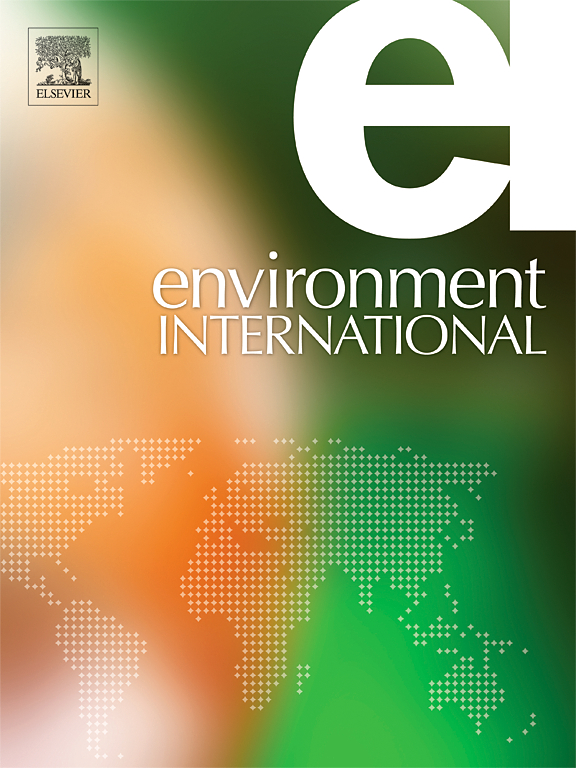A scheme for safety testing and assessment of biochemicals under the EU plant protection products regulation (BiochemPPP-STAS)
IF 10.3
1区 环境科学与生态学
Q1 ENVIRONMENTAL SCIENCES
引用次数: 0
Abstract
Biochemicals (e.g. substances that originate from nature) are often of lower risk to humans and the environment. Nonetheless, when intended for use as active substances in the European Union (EU), they are subject to the same, extensive data requirements as conventional active substances. This impairs their applicability to support a sustainable agriculture. Here, a Scheme for Safety Testing and Assessment of Biochemicals under the EU Plant Protection Products Regulation (BiochemPPP-STAS) is proposed. The BiochemPPP-STAS provides a flexible approach to identify relevant endpoints and studies, the scientific rationale to justify the waiving of studies that would not contribute to the safety assessment and general advice to prepare a ‘fit-for-purpose’ dossier for approval of the biochemical active substance. If the background exposure to the naturally occurring counterpart of the biochemical active substance is not substantially increased through its agricultural use, there is no relevant exposure and further risk assessments are not needed. Prior to the generation of new data, all available information is retrieved and evaluated to address areas of concern and resulting uncertainties. Preferably, data needs are identified following an iterative process, in close alignment between applicant and authority. A base dataset is generated to determine triggers of concern that require follow up in vertebrate animal intensive studies, which are, thus, only conducted as a last resort. To facilitate its regulatory applicability, the BiochemPPP-STAS has been closely aligned with EU legislation. Nonetheless, it has been designed generically and can be adapted to fulfil the legal requirements implemented in other jurisdictions.欧盟植物保护产品法规(biochempp - stas)下的生物化学品安全测试和评估方案
生物化学物质(如来自大自然的物质)对人类和环境的风险往往较低。尽管如此,当它们打算在欧盟(EU)作为活性物质使用时,它们受到与传统活性物质相同的广泛数据要求的约束。这削弱了它们支持可持续农业的适用性。在此,根据欧盟植物保护产品法规(BiochemPPP-STAS)提出了生物化学品安全测试和评估方案。biochempp - stas提供了一种灵活的方法来确定相关的终点和研究,证明放弃对安全性评估没有贡献的研究的科学依据,以及准备“适合用途”的生化活性物质批准档案的一般建议。如果对生物化学活性物质的自然产生的对应物的本底接触没有因其农业用途而大幅增加,则不存在相关的接触,也不需要进一步的风险评估。在产生新数据之前,检索和评估所有可用的信息,以解决关注的领域和由此产生的不确定性。最好是,数据需求是在一个迭代的过程中确定的,在申请人和当局之间保持密切的一致。生成一个基本数据集,以确定需要在脊椎动物密集研究中进行后续研究的关注触发因素,因此,这些研究仅作为最后手段进行。为了促进其监管适用性,biochempp - stas与欧盟立法密切一致。尽管如此,它的设计是一般性的,可以加以调整,以满足在其他司法管辖区执行的法律要求。
本文章由计算机程序翻译,如有差异,请以英文原文为准。
求助全文
约1分钟内获得全文
求助全文
来源期刊

Environment International
环境科学-环境科学
CiteScore
21.90
自引率
3.40%
发文量
734
审稿时长
2.8 months
期刊介绍:
Environmental Health publishes manuscripts focusing on critical aspects of environmental and occupational medicine, including studies in toxicology and epidemiology, to illuminate the human health implications of exposure to environmental hazards. The journal adopts an open-access model and practices open peer review.
It caters to scientists and practitioners across all environmental science domains, directly or indirectly impacting human health and well-being. With a commitment to enhancing the prevention of environmentally-related health risks, Environmental Health serves as a public health journal for the community and scientists engaged in matters of public health significance concerning the environment.
 求助内容:
求助内容: 应助结果提醒方式:
应助结果提醒方式:


